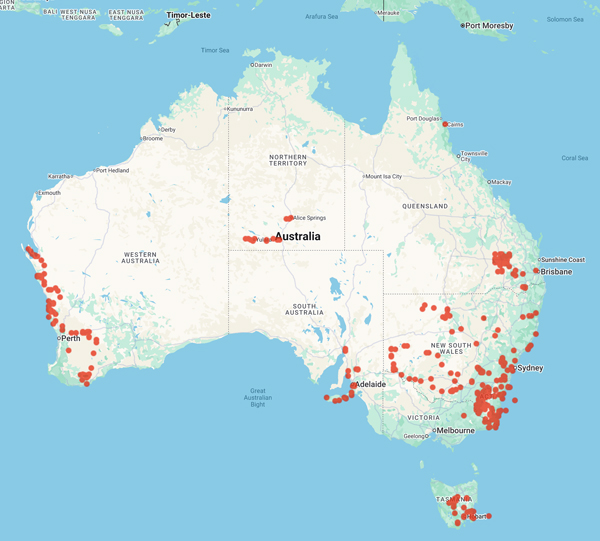
Council of Heads of Australasian Herbaria
Australian National Herbarium
Biographical Notes
 |
Council of Heads of Australasian Herbaria |
 Schmidt-Lebuhn, Alexander Nikolai (1976 - )
Schmidt-Lebuhn, Alexander Nikolai (1976 - )Born on 25 August 1976 in Johannesburg, South Africa;
Education:
2002 - Diplom-Biologe (equiv. M.Sc. or honours), University of Göttingen, Germany, with a thesis on the genus Suessenguthia (Acanthaceae).
2005 - Dr. rer. nat. (equiv. Ph.D.), University of Göttingen, Germany. The core thesis topic was a taxonomic revision of the South American mint genus Minthostachys (Lamiaceae), an important cultural and essential oil plant for the people of the Andes and central Argentina.
In 2006-2008, Alexander was a postdoc at the Martin Luther University of Halle-Wittenberg, Germany.
In 2009-2010, he was a postdoc at the University of Zurich, Switzerland.
Career:
He was appointed to the position of Research scientist at the Australian National Herbarium, CSIRO, Canberra, Australia in 2010.
Since commencing at CSIRO, Alexander's research focuses on the daisy family Asteraceae.
He conducts phylogenetic, taxonomic, and biogeographic research and creates identification tools.
He has published phylogenetic studies of the three largest tribes of Asteraceae in Australia and supervised student projects on several genera of tribe Gnaphalieae.
In addition to studying Australian native Asteraceae, Alexander also applies his expertise to support biological control research and weed management of invasive species such as Senecio madagascariensis (fireweed) and Erigeron bonariensis (flaxleaf fleabane).
Starting in 2018, he has applied computer vision to species identification. He led CSIRO's contribution to WeedScan, an Australian weed identification and reporting app; published a Lucid key to the genera Cassinia, Ozothamnus, and relatives; created a Lucid key to the seeds of weedy Asteraceae; and delivered image classification models for the identification of pest insects and weed seeds to government.
Source: Extracted from:
Pers.Comm. A. Schmidt-Lebuhn (2025)
Portrait Photo: 2015, M.Fagg, ASBS Conference, Canberra.
Data from 2,467 specimens in Australasian herbaria.

